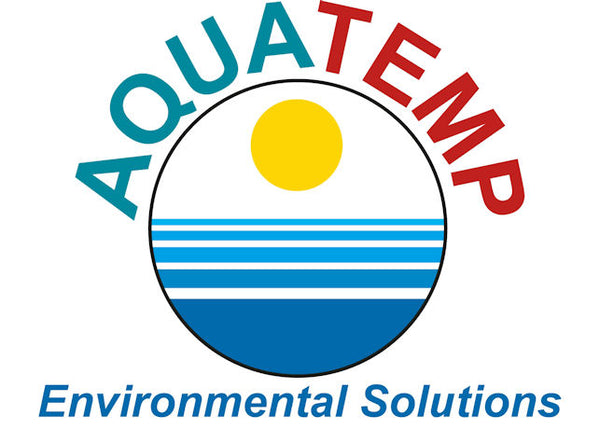Waterless urinals have been around for 20 years now having become available in the mid 1990's. Depending on your perspective they are beginning to gain widespread acceptance coupled with notoriety. But in a time where water is becoming increasingly expensive in commercial buildings, getting rid of the flushing urinal is an excellent way to reduce overheads and operational maintenance costs.
Despite what misinformed engineers and plumbers say waterless urinals aren't some ill-advised attempts at water sustainability and eco-friendly urinals. In fact waterless urinals are a significant improvement in urinal design both waterless and water flushing, not just for commercial building owners, the environment but for the user experience.
Aquatemp Environmental Solutions has below produced a guide to assist consumers and explain how waterless urinals work.
The difference between waterless urinals and water flushing urinals is contrary to some opinions much more than simply turning off the water supply. It is impossible to turn a water flushing urinal into a waterless one by not flushing an existing urinal or putting in dubious urinal valves or odour blocking products or urinal mats. Water flushing urinals are similar to toilets as they use gravity driven water to rinse out the bowl and flush waste down the drain and through the wastepipes to the sewer.
That delightful odour that is a universal characteristic of mens public toilets is, in reality, the chemical interaction of water and urine that creates the bacteria that produce that "delightful" urine smell in male toilet facilities. That odour is eliminated by installing waterless urinals because the water is eliminated from the equation. In fact urine by itself is sterile. Waterless urinals create a dry operation that prevent bacteria breeding in wet areas on tiles plus the surface of the urinal will typically stay dry unlike water flushing urinals that are perpetually moist. The removal of water and urine overspray combats the growth of odour producing and harmful bacteria.
All urinals are shaped by design to minimise splashing and maximise gravitational pull which ensures that the urinal bowl drains fully after use. Waterless urinals dont waste expensive water to push the urine to the waste outlet and down the drain. Instead waterless urinals utilise specially designed trapping systems that force urine down the drain and prevent sewage odours from entering up through the pipes. The majority of waterless urinals on the market today use replaceable cartridges and use usually a blue liquid sealant that is lighter than urine floating on top of the urine in the trapping system and creating an odour proof barrier.
Very simply as the urinal drains, the urine filters through the the sealant with uric acids sinking to the bottom of the trap which removes uric acid from slowly trickling through the plumbing wastepipes and prevents crystallization in the wastepipes. This prevents urine and sewer gases from finding their way back up the urinal. As the urine enters the main trap chamber and through the sealant the urine overflows downward through the S-shaped interior and into the plumbing wastepipes leaving the uric salts behind.
The trap is designed not only to force urine to drain, but to prevent the sealant from being disturbed, ensuring that, once drained, neither urine nor sewage odours will escape. After approximately 5000-15000 uses depending on the waterless urinal brand the sealant will begin to degrade. This will require the old cartridge to be removed, the urinal cleaned, and a new cartridge put into place.
The major criticism of this design is that it's a supposedly eco-friendly solution but in reality requires the repeated use and disposal of a plastic cartidge or trap and the installation of extremely expensive odour barrier oil. Zero Flush waterless urinals addresses this problem by not only eliminating the replaceable trap but also the liquid sealant odour barrier technology with the introduction of the EnviroSeal system .
Basically, instead of having a cartridge using odour barrier sealant or oil the EnviroSeal system utlises elastomer seal technology that opens to let urine through and immediately seals to prevent odours escaping. The addition of BioPur enzyme kits prevents uric salts from damaging the plumbing wastepipes plus eliminates odours escaping from the Zero Flush urinal. To download more information click on the following link
- Maintenance, maintenance and maintenance is really the key issue with all waterless urinals because their cleaning and maintenance differ from water flushing urinals. Upgrading to waterless urinals without upgrading the cleaning methodology can have numerous negative ramifications such as with odours to clogged urinals to damage to the plumbing wastepipe system as a whole. Both cleaning and maintenance staff should be thoroughly educated on the care and cleaning of waterless urinals to prevent problems arising. As with all urinals, waterless urinals should be periodically sprayed with a mild cleaner and wiped down, especially if it is being used in a busy commercial operating environment. Generally waterless urinals are less complex and less expensive to clean and maintain providing manufacturers instructions are adhered to.
- While ostensibly waterless urinals are designed not to use any water, the rest of the plumbing system is not. Because urine is mildly acidic urinals should never be installed with copper plumbing wastepipes. All urinals can cause uric salts to build up in the plumbing wastepipes and to prevent this, the system should be flushed thoroughly with high pressure water once every 6 months. This washes away all crystallised uric acid, as well as any degraded sealing liquid before it can build up or do any damage to the plumbing wastepipes.
When properly maintained in accordance with manufacturers instructions, waterless urinals are completely odour free and absolutely hygienic. Waterless urinals are an excellent way to reduce water consumption, reduce water charges, reduce maintenance and operational cost and eliminate that pungent mens public toilet smell.

